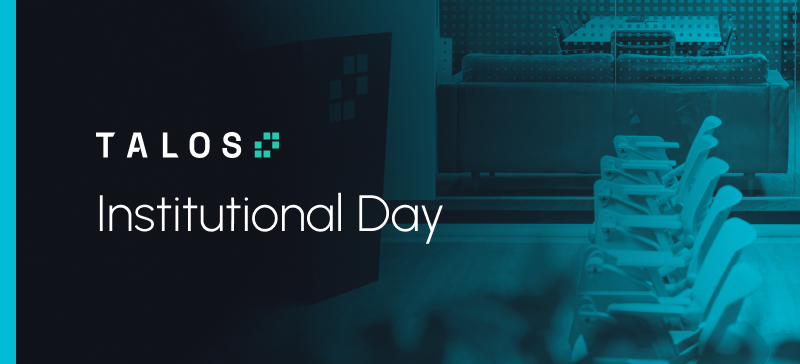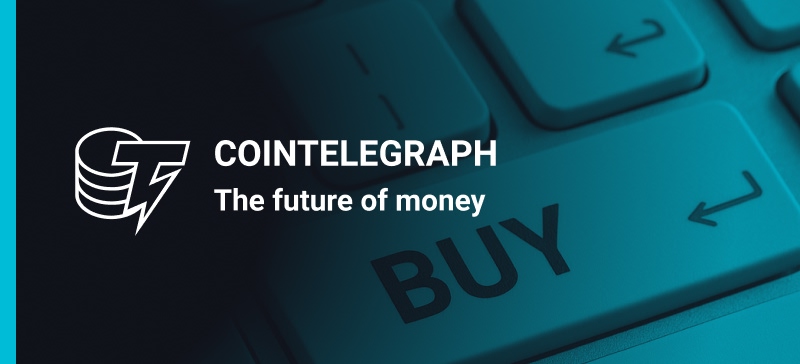Bitcoin Steadies, ETFs Outpace Price Action, Robinhood Goes On-Chain
Month in Review
Bitcoin Steadies, ETFs Outpace Price Action, Robinhood Goes On-Chain
Introduction
Month in Review
- BTC ETFs pulled in $5.6 B, while ETH ETFs drew $1.6 B over the past 30 trading days
- SEC paused Grayscale’s Large Cap Fund conversion for further review, a day after staff approved it
- Robinhood rolled out stock tokens and unveiled plans for its own Layer 2 blockchain
BTC traded modestly higher, but ETF inflows strong, SEC paused GDLC conversion
Crypto markets traded broadly in the green through June, with the total market capitalization of the crypto universe holding just below the $3.4 trillion mark and bitcoin dominance hovering around 64% for most of the month. Among the blue chips, bitcoin rose by 2.4% during June, while ether declined by 1.7% over the same period. The US-listed spot-only ETF universe saw net inflows across the last 30 trading days, with BTC ETFs accumulating $5.6 billion and ETH ETFs drawing in $1.6 billion—driven largely by BlackRock's offerings. BlackRock’s iShares Bitcoin Trust (IBIT) is now generating more revenue than one of its most iconic products, the iShares Core S&P 500 ETF (IVV), according to Bloomberg data. Despite managing just $52 billion in assets—compared to IVV’s $624 billion—IBIT’s higher 0.25% management fee brings in roughly $187.2 million annually. While IBIT’s fees exceed those of more traditional ETFs, they reflect the added complexity, custody, and regulatory oversight required to offer bitcoin exposure.
The SEC allowed Grayscale to uplist the Digital Large Cap Fund (GDLC), into an ETF through delegated authority — meaning the SEC's commissioners did not vote to approve the conversion, but rather agency staff gave the sign-off. The fund tracks a basket of digital assets—primarily bitcoin, along with ether, XRP, Solana, and Cardano—benchmarking its performance against the CoinDesk 5 Index (CD5). The SEC’s leaders are reviewing the agency's recent approval of a Grayscale effort to convert a fund into an ETF, a letter dated July 1 said. Bitcoin currently accounts for about 80% of the fund’s weight. Originally launched in February 2018, GDLC has amassed nearly $755 million in assets under management and carries a 2.5% expense ratio. Next in line is Bitwise, which awaits a decision on converting its Bitwise 10 Crypto Index Fund (BITW) into an ETF. BITW allocates 79% to bitcoin, with the remainder spread across ETH, XRP, SOL, ADA, SUI, LINK, AVAX, LTC, and DOT. The approval comes as the SEC is reportedly exploring a broader regulatory shift that could streamline the crypto ETF approval process by eliminating the 19b-4 rule-change requirement. Under the proposed framework, issuers would file only an S-1 registration, triggering a 75-day review period. The change aims to speed up compliant ETF launches while ensuring asset quality and robust surveillance standards are upheld by exchanges.
Design software firm Figma disclosed in its SEC filing that it holds nearly $70 million in bitcoin ETFs and has earmarked another $30 million in stablecoins for direct bitcoin purchases. The company, which filed to go public on the NYSE under the ticker “FIG,” revealed a $55 million investment in the Bitwise Bitcoin ETF (BITB) made on March 3, 2024—valued at $69.5 million with a 26% unrealized gain as of March 31. Corporate interest in crypto treasury allocation continues to accelerate. On Monday, Strategy (formerly MicroStrategy) announced a $531 million BTC purchase, lifting its holdings to 597,000 BTC. Japanese firm Metaplanet also added 1,005 BTC for $108 million, overtaking Cleanspark as the fifth-largest corporate bitcoin holder. Public companies outpaced ETFs in bitcoin accumulation for the third consecutive quarter, increasing their holdings by approximately 18%, according to data from Bitcoin Treasuries. In comparison, bitcoin held by ETFs grew by 8% over the same period. Meanwhile, institutional appetite is beginning to extend beyond bitcoin—mining firm BitMine Immersion Technologies raised $250 million via private placement to establish an ether treasury position.
From bills to blocks–stablecoins, tokenized stocks, and the Ethereum engine
In June, the US Senate passed the GENIUS Act (S.1582) with strong bipartisan support (68–30), marking a milestone in federal stablecoin regulation. The bill creates a national framework for “payment stablecoins”—tokens backed by fiat and government securities used for payments or settlement—while explicitly excluding algorithmic, endogenously collateralized, and non-payment-focused stablecoins. The legislation now heads to the House, with White House officials having indicated support for getting it signed before the August recess. The GENIUS Act designates three eligible issuer types: subsidiaries of insured depository institutions (IDIs), federally qualified nonbank issuers regulated by the OCC, and state-qualified issuers. A key threshold requires non-bank issuers with over $10 billion in outstanding stablecoins to fall under federal oversight, while smaller issuers may operate under state regimes deemed “substantially similar”. Many states will need new legislation to meet this bar. For IDI and federally qualified non-bank issuers, regulators must act on applications within 120 days, with a 12-month safe harbor for those pending when the law takes effect. Importantly, the bill also includes a carve-out for Big Tech: publicly traded firms not primarily engaged in financial services cannot issue stablecoins without unanimous approval from a three-agency panel (Treasury, Fed, FDIC). These companies must also adhere to strict data-use restrictions, banning monetization of transaction data for advertising or resale.
AllUnity—a collaboration between DWS, Flow Traders, and Galaxy—is preparing to launch EURAU, a euro-denominated stablecoin built to meet MiCA regulatory standards. Backed 1:1 with reserves, EURAU is designed for institutional use, offering enhanced transparency through audited proof-of-reserves and formal regulatory disclosures. The token will support round-the-clock cross-border settlement and is intended to integrate directly into the workflows of regulated financial institutions, fintechs, treasury systems, and corporates across Europe and beyond. EURAU enters a rapidly evolving euro stablecoin arena that includes Circle’s EURC, Société Générale’s EURCV, and MiCA-compliant dollar-backed assets like USDCV and USDG. Meanwhile, regulators in Asia continue refining their digital asset frameworks. Hong Kong unveiled a new policy update—Policy Statement 2.0 on the Development of Digital Assets—which expands upon its 2022 guidance. The updated roadmap introduces the “LEAP” framework, aimed at harmonizing oversight for virtual asset service providers (VASPs), including trading venues, stablecoin issuers, custodians, and brokers. Under LEAP, the Securities and Futures Commission (SFC) will handle VASP licensing, while the Hong Kong Monetary Authority (HKMA) will take the lead on regulating tokenized real-world assets.
Robinhood has rolled out tokenized US stocks and ETFs for users in the EU, offering eligible investors access to over 200 equities with zero commissions, dividend support, and 24/5 trading availability. These stock tokens, which initially launch on Arbitrum, mark a shift in Robinhood’s European offering—from a crypto-only app to a multi-asset investment platform leveraging blockchain infrastructure. Token holders will receive dividend payouts directly in-app, mirroring traditional stock ownership. In the future, Robinhood plans to migrate the tokens to its own Layer 2 blockchain, currently in development, which will be designed for real-world asset tokenization and optimized for seamless bridging, 24/7 trading, and self-custody features. The move comes as tokenized equities gain momentum across the industry. Backed Finance has also announced the launch of its tokenized stock suite—some 60 equities and ETFs—on major crypto exchanges, with Bybit and Kraken among the first to support trading. The offering will soon integrate with DeFi platforms like Kamino Swap, Raydium, and Jupiter, enabling around-the-clock trading and potential use as collateral in lending protocols. The shift signals a broader push to bring traditional financial assets on-chain, reshaping how equities are accessed, held, and transacted in the digital era.
The convergence of stablecoin growth and tokenized asset rails is reinforcing Ethereum’s role as foundational infrastructure. With the total stablecoin market cap now surpassing $250 billion and ETH spot ETFs seeing net inflows over the past month, demand for blockspace and exposure continues to build. On the supply side, ETH held on exchanges has dropped to a 9-year low, while nearly 30% of the total supply is currently staked—together pointing to a shrinking pool of liquid ETH. As demand builds and liquidity thins, ETH may finally be poised to break out of its cycle-long shadow.
DISCLAIMER: The views and opinions expressed herein are those of the author(s) and do not necessarily reflect the views of Talos Global, Inc. or its affiliates (collectively, "Talos") and summarizes information and articles with respect to cryptocurrencies or related topics. This material is for informational purposes only and is only intended for sophisticated institutional investors, and is not (i) an offer, or solicitation of an offer, to invest in, or to buy or sell, any interests or shares, or to participate in any investment or trading strategy, (ii) intended to provide accounting, legal, or tax advice, or investment recommendations, or (iii) an official statement of Talos. No representation or warranty is made, expressed or implied, with respect to the accuracy or completeness of the information or to the future performance of any digital asset, financial instrument or other market or economic measure. The information is believed to be current as of the date indicated and may not be updated or otherwise revised to reflect information that subsequently became available or a change in circumstances after the date of publication. Talos and its employees do not make any representation or warranty, expressed or implied, as to accuracy or completeness of the information or any other information transmitted or made available. Investing in cryptocurrency comes with risk. Certain statements in this document provide predictions and there is no guarantee that such predictions are currently accurate or will ultimately be realized. Prior results that are presented here are not guaranteed and prior results do not guarantee future performance. Recipients should consult their advisors before making any investment decision. Talos may have financial interests in, or relationships with, some of the assets, entities and/or publications discussed or otherwise referenced in the materials. Certain links that may be provided in the materials are provided for convenience and do not imply Talos's endorsement, or approval of any third-party websites or their content. Any use, review, retransmission, distribution, or reproduction of these materials, in whole or in part, is strictly prohibited in any form without the express written approval of Talos.
Latest insights and research
Request a demo
Find out how Talos can simplify the way you interact with the digital asset markets.






